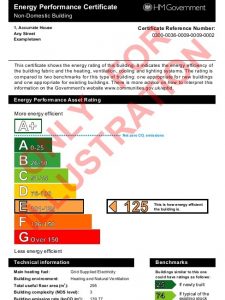By Stanley Rayfield
Many of those involved with managing property have been aware of the approaching minimum energy standards for buildings. Now the regulation is here.
‘The Energy Efficiency (Private Rented Property) (England and Wales) Regulations 2015’ was required by the Energy act 2011 and will bring about minimum energy standards for the first time. Organisations that have an ISO14001 or ISO50001 management system will be adding this regulation to their legal register and it presents both risks and opportunities.
 What does it mean for you?
What does it mean for you?
- From 1st April 2016, tenants can apply for consent to carry out energy efficiency improvements in privately rented properties
- From 1st April 2018, buildings with an Energy Performance Certificate (EPC) rating of F or G can no longer be legally marketed for rent or lease
- On the 1 April 2023, this will be extended and all existing commercial leases will need an EPC rating of E or better – it’s thought that this will affect around 20% of all commercial leases.
- Non-compliance will be linked to the rateable value of the building subject to a maximum fine of £150,000.
- Tenants of poorly rating properties will have the right to ask the landlord to improve the rating with a ‘relevant energy efficiency improvement’. This can be a measure that improves the EPC rating and achieves “a simple payback of seven years or less”
How can you achieve an E rating?
First of all, it is important to understand that huge numbers of existing EPC ratings are wrong. Low fee and low quality assessments formed the bulk of the EPCs produced for some years. Fees have often been below the market rate creating a pressure felt by some assessors to use poor, default values rather than to spend time and resources on accurate calculations.
This was confirmed within a Department of Energy and Climate change (DECC) mystery shopping exercise which showed quite the scale of inaccuracy.
This was confirmed within a Department of Energy and Climate change (DECC) mystery shopping exercise which showed quite the scale of inaccuracy.
We can help.
In quite a number of cases, spending time creating a detailed and accurate energy model has reduced the use of default values enough to achieve an ‘E’ rating without the need for any improvement works.
For some time now, we’ve been reviewing and re-calculating old EPCs in order to establish an accurate baseline. By accurately calculating the baseline EPC, we can in many cases minimise the work that needs to be done to a property in order to reach an ‘E’ rating.
Click here if you would like to discuss the effciency of a particular building


